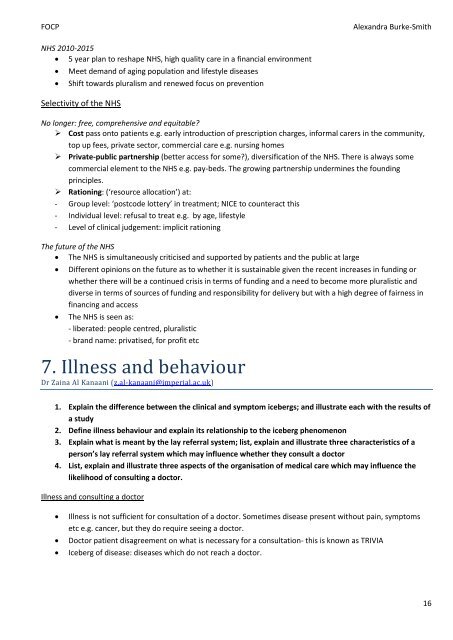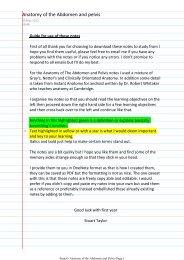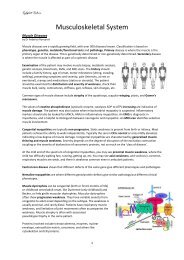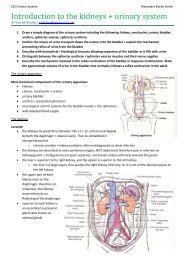1. Introduction to Medical Sociology
1. Introduction to Medical Sociology
1. Introduction to Medical Sociology
You also want an ePaper? Increase the reach of your titles
YUMPU automatically turns print PDFs into web optimized ePapers that Google loves.
FOCP Alexandra Burke-Smith<br />
NHS 2010-2015<br />
� 5 year plan <strong>to</strong> reshape NHS, high quality care in a financial environment<br />
� Meet demand of aging population and lifestyle diseases<br />
� Shift <strong>to</strong>wards pluralism and renewed focus on prevention<br />
Selectivity of the NHS<br />
No longer: free, comprehensive and equitable?<br />
� Cost pass on<strong>to</strong> patients e.g. early introduction of prescription charges, informal carers in the community,<br />
<strong>to</strong>p up fees, private sec<strong>to</strong>r, commercial care e.g. nursing homes<br />
� Private-public partnership (better access for some?), diversification of the NHS. There is always some<br />
commercial element <strong>to</strong> the NHS e.g. pay-beds. The growing partnership undermines the founding<br />
principles.<br />
� Rationing: (‘resource allocation’) at:<br />
- Group level: ‘postcode lottery’ in treatment; NICE <strong>to</strong> counteract this<br />
- Individual level: refusal <strong>to</strong> treat e.g. by age, lifestyle<br />
- Level of clinical judgement: implicit rationing<br />
The future of the NHS<br />
� The NHS is simultaneously criticised and supported by patients and the public at large<br />
� Different opinions on the future as <strong>to</strong> whether it is sustainable given the recent increases in funding or<br />
whether there will be a continued crisis in terms of funding and a need <strong>to</strong> become more pluralistic and<br />
diverse in terms of sources of funding and responsibility for delivery but with a high degree of fairness in<br />
financing and access<br />
� The NHS is seen as:<br />
- liberated: people centred, pluralistic<br />
- brand name: privatised, for profit etc<br />
7. Illness and behaviour<br />
Dr Zaina Al Kanaani (z.al-kanaani@imperial.ac.uk)<br />
<strong>1.</strong> Explain the difference between the clinical and symp<strong>to</strong>m icebergs; and illustrate each with the results of<br />
a study<br />
2. Define illness behaviour and explain its relationship <strong>to</strong> the iceberg phenomenon<br />
3. Explain what is meant by the lay referral system; list, explain and illustrate three characteristics of a<br />
person’s lay referral system which may influence whether they consult a doc<strong>to</strong>r<br />
4. List, explain and illustrate three aspects of the organisation of medical care which may influence the<br />
likelihood of consulting a doc<strong>to</strong>r.<br />
Illness and consulting a doc<strong>to</strong>r<br />
� Illness is not sufficient for consultation of a doc<strong>to</strong>r. Sometimes disease present without pain, symp<strong>to</strong>ms<br />
etc e.g. cancer, but they do require seeing a doc<strong>to</strong>r.<br />
� Doc<strong>to</strong>r patient disagreement on what is necessary for a consultation- this is known as TRIVIA<br />
� Iceberg of disease: diseases which do not reach a doc<strong>to</strong>r.<br />
16







